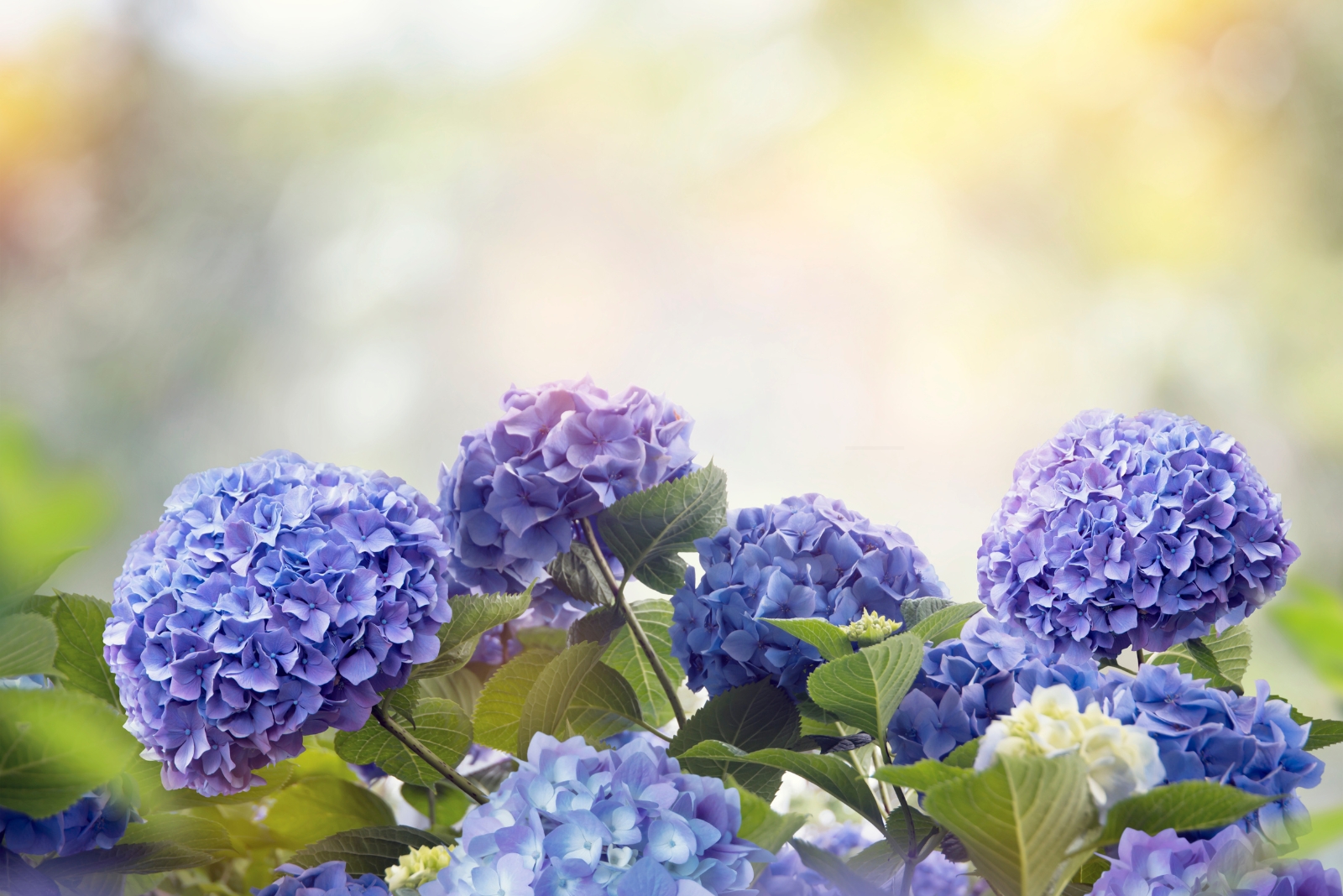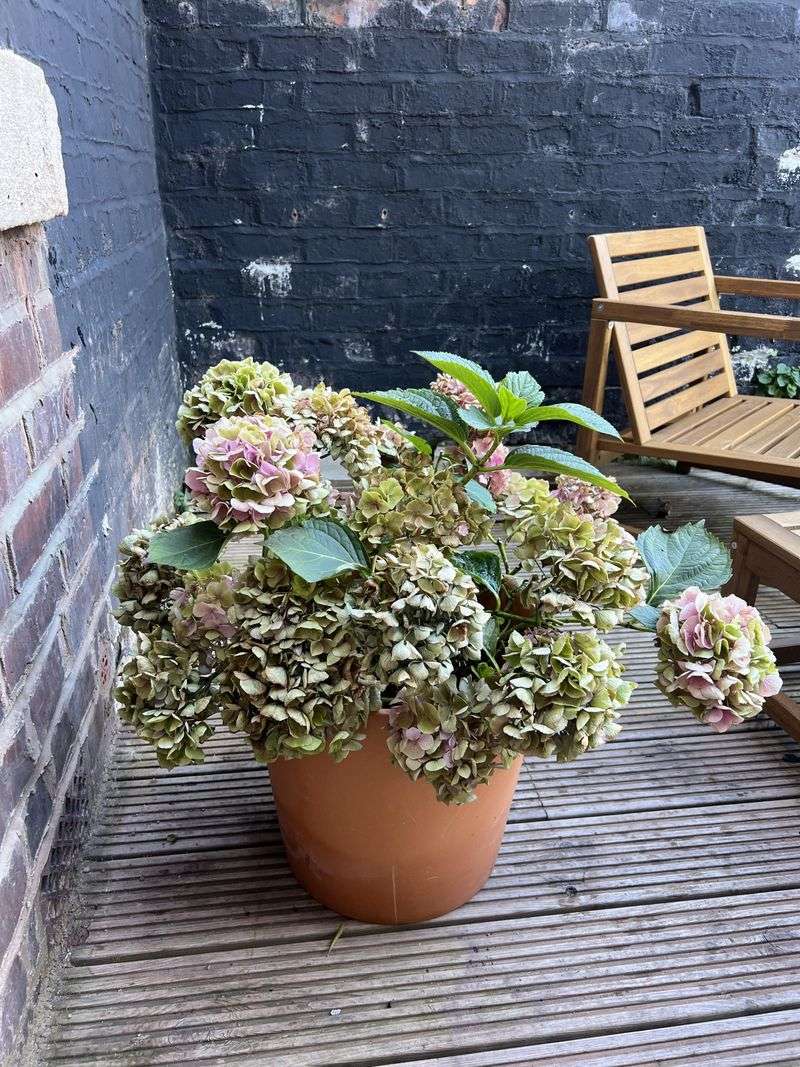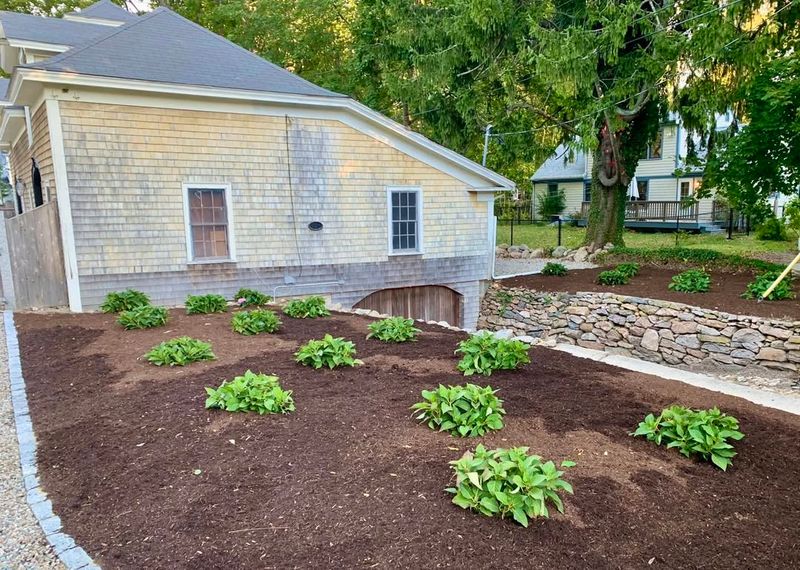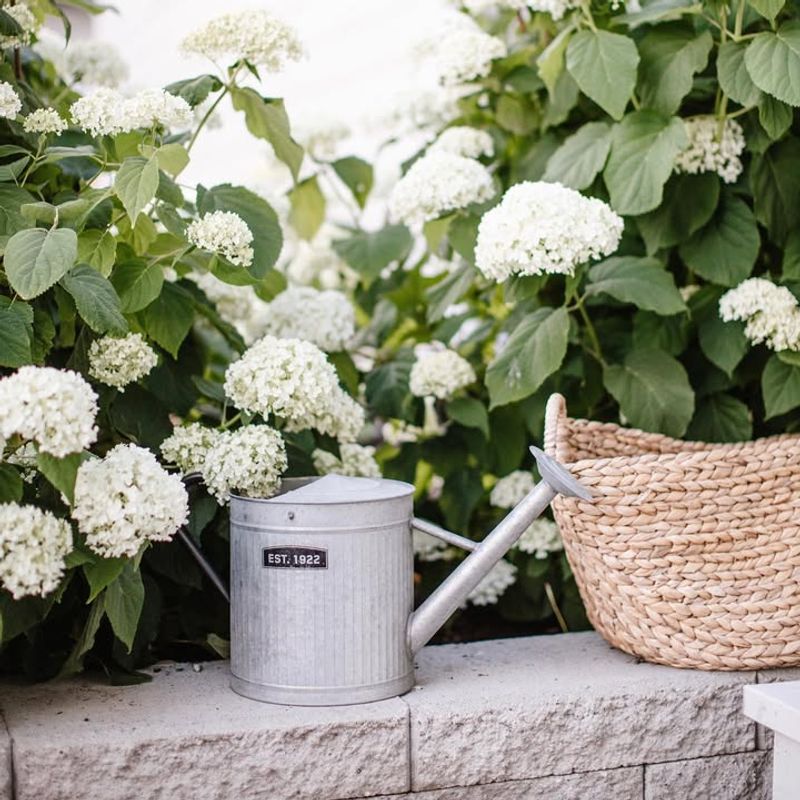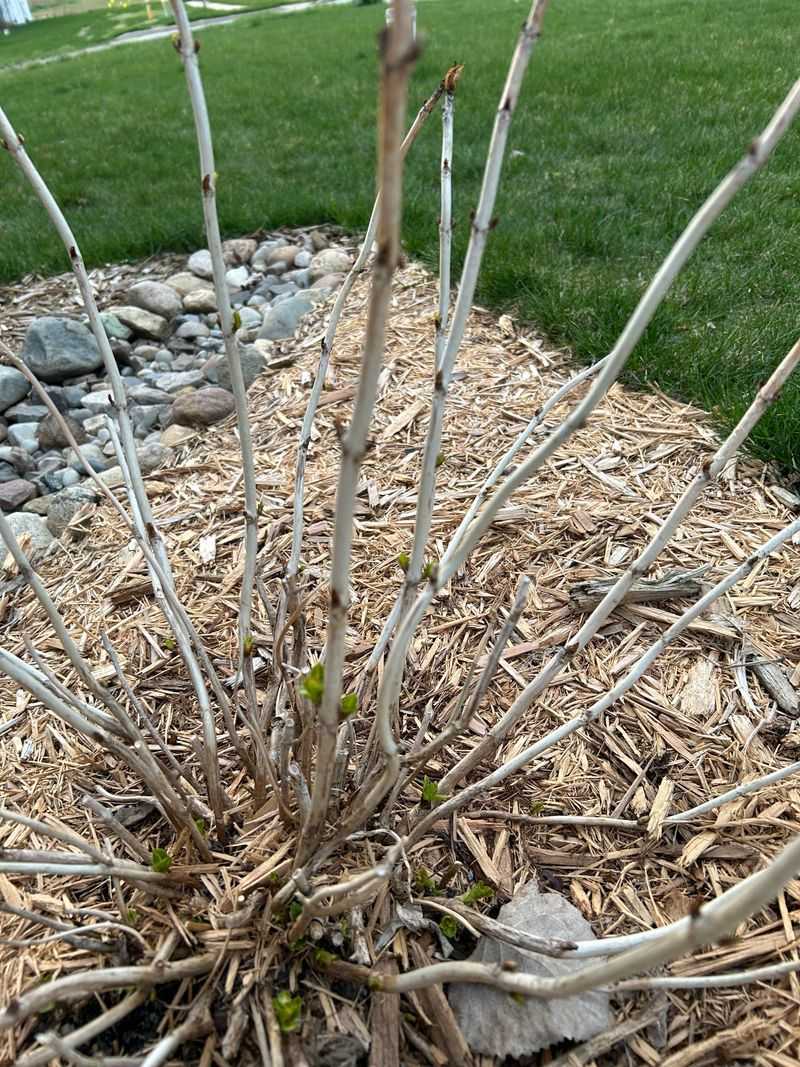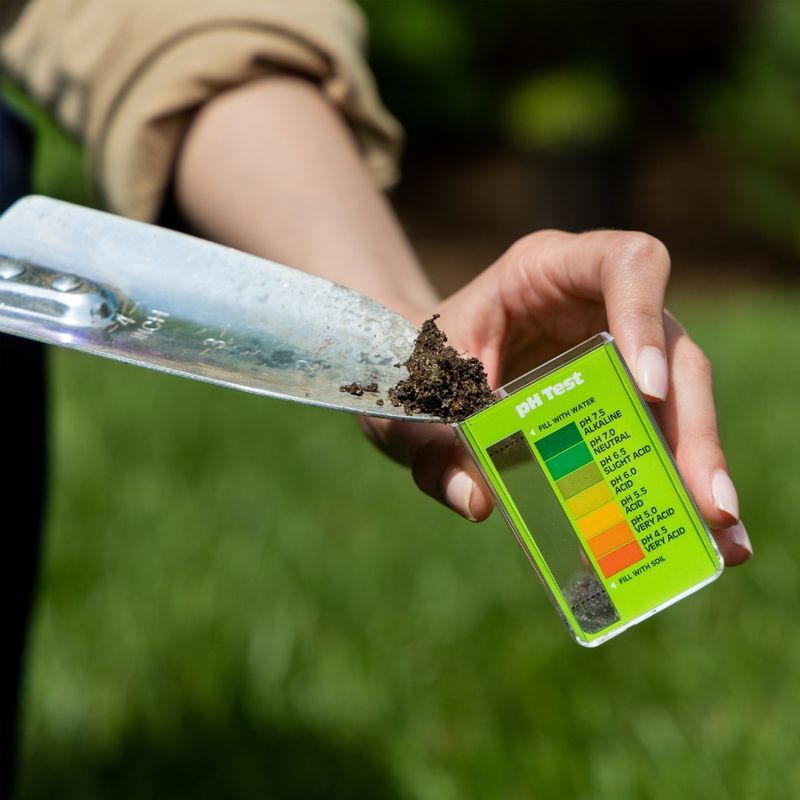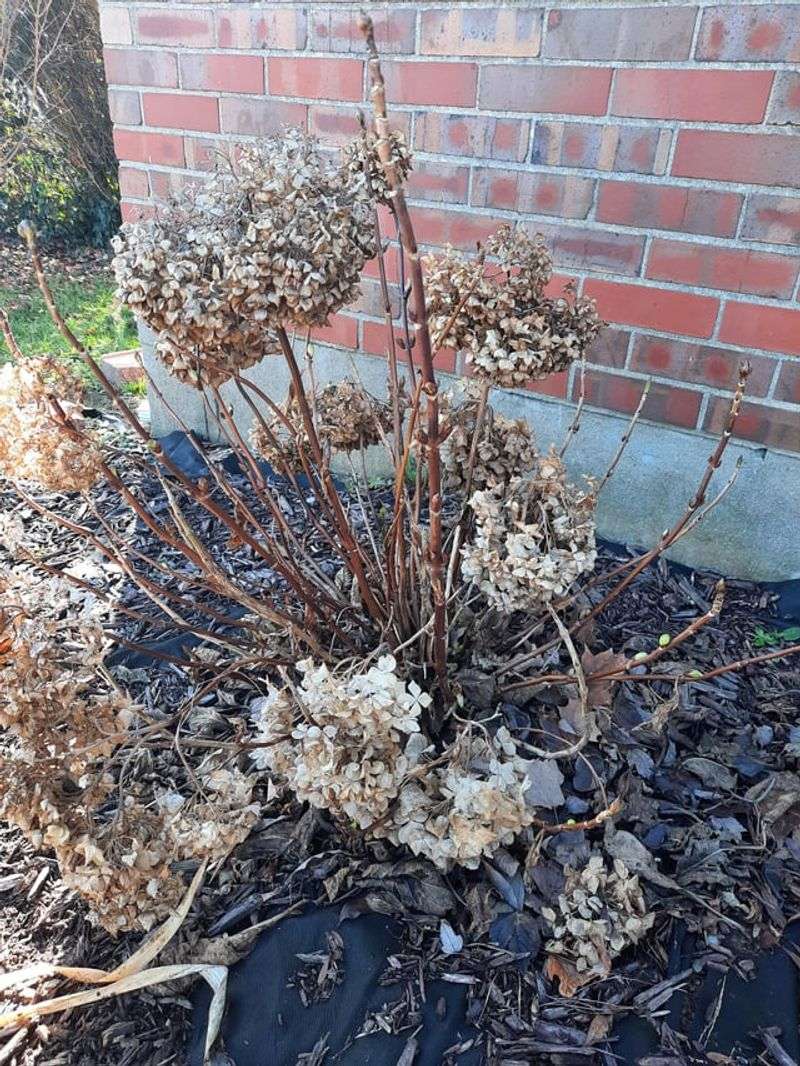October brings cooler weather to Ohio, and your hydrangeas need special attention to survive the winter ahead. Taking care of these beautiful flowering shrubs now will help them return even stronger next spring.
Without proper preparation, harsh winter conditions can damage or even kill your plants, leaving you with disappointing blooms or bare spots in your garden.
1. Stop Deadheading And Leave Spent Blooms Alone
Many gardeners love keeping their plants tidy, but October is when you should resist the urge to remove old hydrangea flowers. Those dried blooms actually serve as natural insulation for the buds underneath, protecting them from freezing temperatures and harsh winds.
Leaving the spent flowers in place creates a protective shield that helps your plant survive Ohio’s unpredictable winter weather. The dried petals trap air and moisture, acting like a cozy blanket for delicate new growth that will bloom next year.
2. Apply A Thick Layer Of Protective Mulch
Your hydrangeas need a warm blanket of mulch before winter arrives in full force. Spread a three to four-inch layer of organic material like shredded bark, wood chips, or compost around the base of each plant.
This mulch layer keeps soil temperatures stable and prevents roots from experiencing damaging freeze-thaw cycles. Make sure to keep the mulch a few inches away from the main stems to prevent rot and allow air circulation around the plant.
3. Reduce Watering But Don’t Stop Completely
While your hydrangeas don’t need as much water in October, they still require moisture before the ground freezes solid. Cut back on your watering schedule, but make sure the soil stays slightly damp rather than bone dry.
Well-hydrated plants handle winter stress much better than thirsty ones. Give your hydrangeas a deep watering once a week if rainfall is scarce, focusing on the root zone rather than the leaves and flowers above.
4. Skip Pruning Until Late Winter Or Early Spring
It might seem like the perfect time to trim back your hydrangeas, but October pruning can actually harm your plants. Cutting stems now removes protective tissue and exposes tender inner wood to freezing temperatures and disease.
Old stems provide valuable insulation and support throughout winter months. Wait until late February or March when you can see which stems survived and identify where new growth is emerging before making any cuts to your hydrangeas.
5. Check Soil pH And Amend If Necessary
October offers an ideal window to test and adjust your soil chemistry for next season’s blooms. Hydrangeas are sensitive to pH levels, which directly affect their flower colors and overall health throughout the growing season.
Grab a simple soil testing kit from your local garden center and check the pH around your plants. If you want blue flowers, add sulfur to lower pH; for pink blooms, add lime to raise it, giving amendments time to work into the soil over winter.
6. Protect Vulnerable Varieties With Burlap Wrapping
Certain hydrangea types, especially bigleaf and oakleaf varieties, struggle with Ohio’s bitter winter winds and temperature swings. Creating a simple burlap barrier around these sensitive plants can mean the difference between abundant blooms and total disappointment next summer.
Drive three or four stakes into the ground around each plant, then wrap burlap around the stakes to form a protective cylinder. This windbreak shields branches from drying winds while still allowing air circulation to prevent disease problems.

